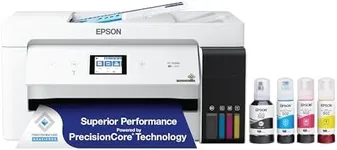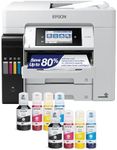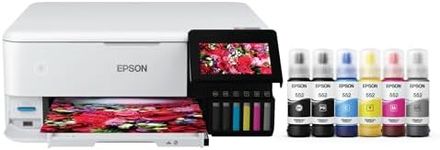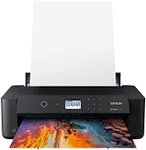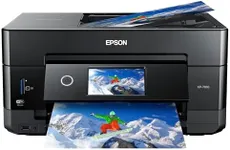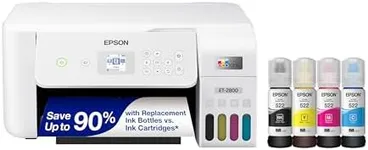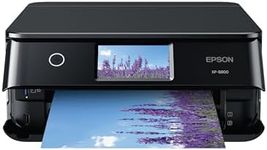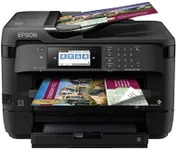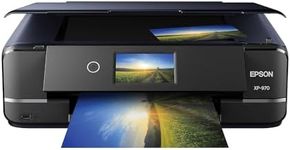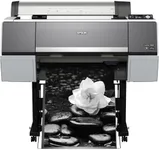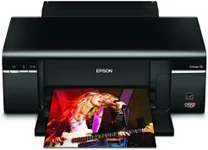Buying Guide for the Best Epson Photo Printers
Choosing the right Epson photo printer can be a rewarding experience, especially if you are passionate about photography and want to bring your images to life with high-quality prints. To make an informed decision, it's important to understand the key specifications that differentiate various models. By focusing on these specs, you can find a printer that best suits your needs, whether you're a professional photographer, a hobbyist, or someone who simply enjoys printing photos at home.Print ResolutionPrint resolution, measured in dots per inch (DPI), determines the level of detail and clarity in your printed photos. Higher DPI values mean more detailed and sharper images. For professional-quality prints, look for a printer with at least 2400 DPI. If you're printing casual photos for personal use, a lower DPI, such as 1200, may suffice. Consider your need for detail and the type of photos you plan to print when choosing the right resolution.
Ink SystemThe ink system refers to the number and type of ink cartridges a printer uses. Epson photo printers often use multiple ink cartridges, including specialized colors, to produce a wider color gamut and more accurate prints. Printers with more ink cartridges, such as six or more, can produce richer and more vibrant colors. If color accuracy and vibrancy are crucial for your prints, opt for a printer with a more advanced ink system. For general photo printing, a printer with four cartridges may be sufficient.
Print Size CapabilityPrint size capability indicates the maximum size of paper the printer can handle. Common sizes include 4x6 inches, 5x7 inches, and 8x10 inches, but some printers can handle larger formats like 13x19 inches or even wider. If you plan to print large posters or professional-grade photos, choose a printer that supports larger paper sizes. For standard photo prints, a printer that handles up to 8x10 inches should be adequate.
Print SpeedPrint speed, measured in pages per minute (PPM), indicates how quickly a printer can produce prints. While speed is less critical for photo printing than for document printing, it can still be a factor if you need to print large volumes of photos. Faster print speeds can save you time, especially for high-volume projects. If you print photos occasionally, a slower speed may not be an issue. Consider your printing frequency and volume when evaluating print speed.
Connectivity OptionsConnectivity options determine how you can connect your printer to your devices. Common options include USB, Wi-Fi, and Ethernet. Wi-Fi connectivity allows for wireless printing from multiple devices, which is convenient for home use. Some printers also support mobile printing via apps or cloud services. If you prefer a wired connection, ensure the printer has a USB or Ethernet port. Choose a printer with connectivity options that match your preferred printing setup and workflow.
Paper HandlingPaper handling refers to the types and capacities of paper a printer can manage. Look for features like multiple paper trays, automatic document feeders, and support for various paper types, including glossy, matte, and fine art papers. If you frequently switch between different paper types, a printer with multiple trays can be very convenient. Consider the types of paper you plan to use and the volume of printing when evaluating paper handling capabilities.
Additional FeaturesAdditional features can enhance your printing experience. These may include touchscreen controls, memory card slots, direct printing from cameras, and advanced color management tools. Touchscreen controls can make the printer easier to use, while memory card slots and direct printing options can streamline your workflow. Advanced color management tools are beneficial for professional photographers who need precise color control. Consider which additional features will be most useful for your specific needs.



